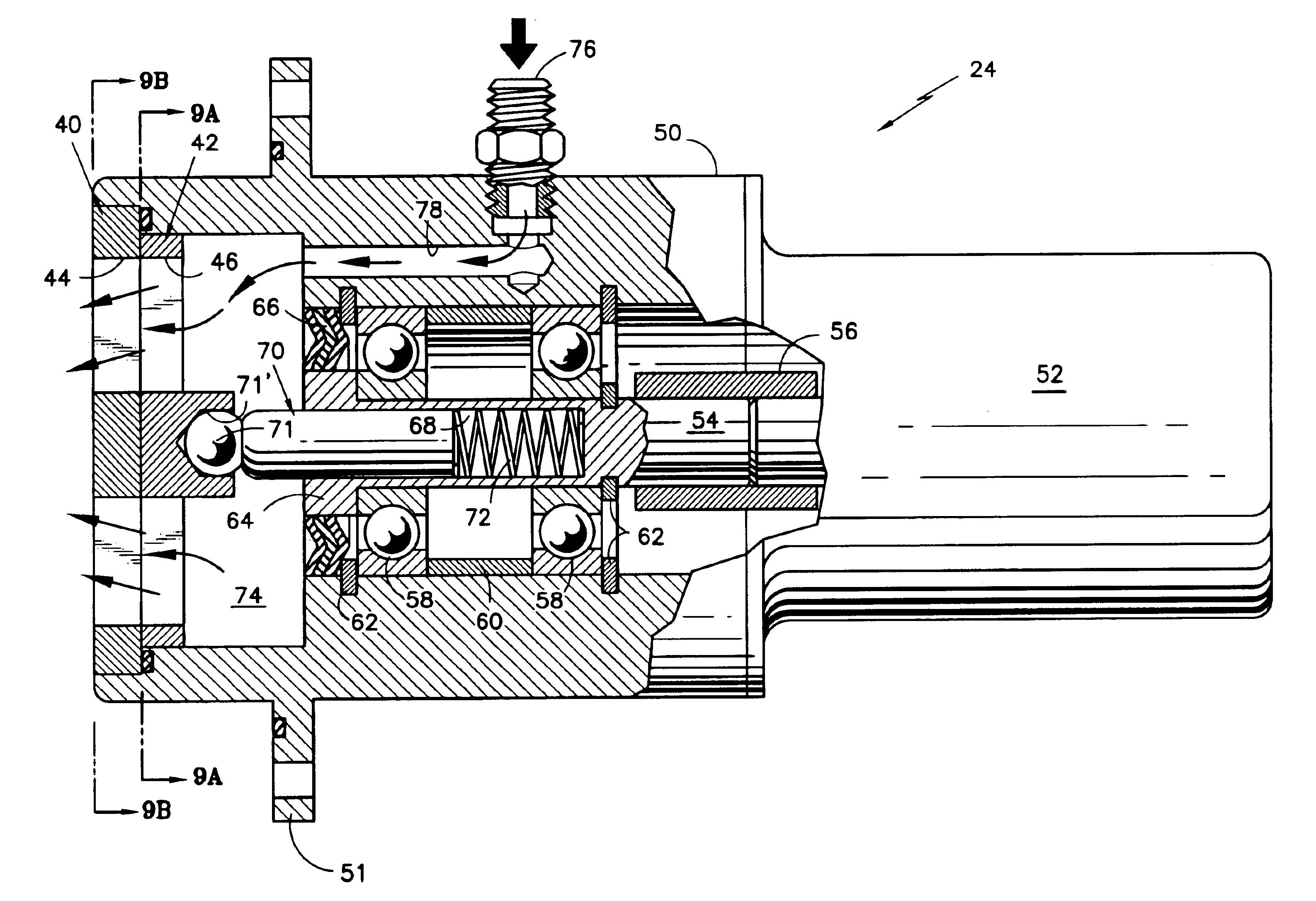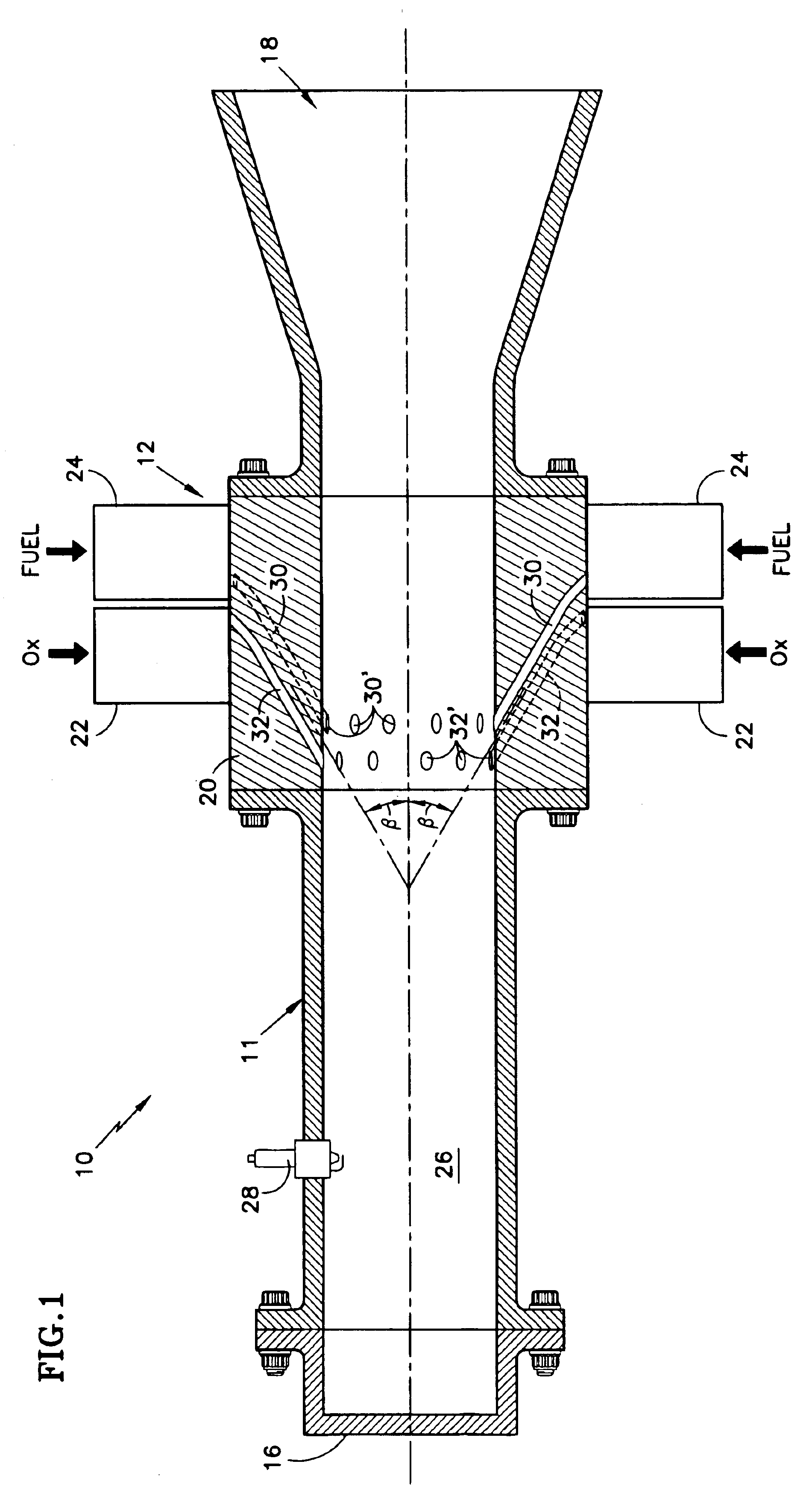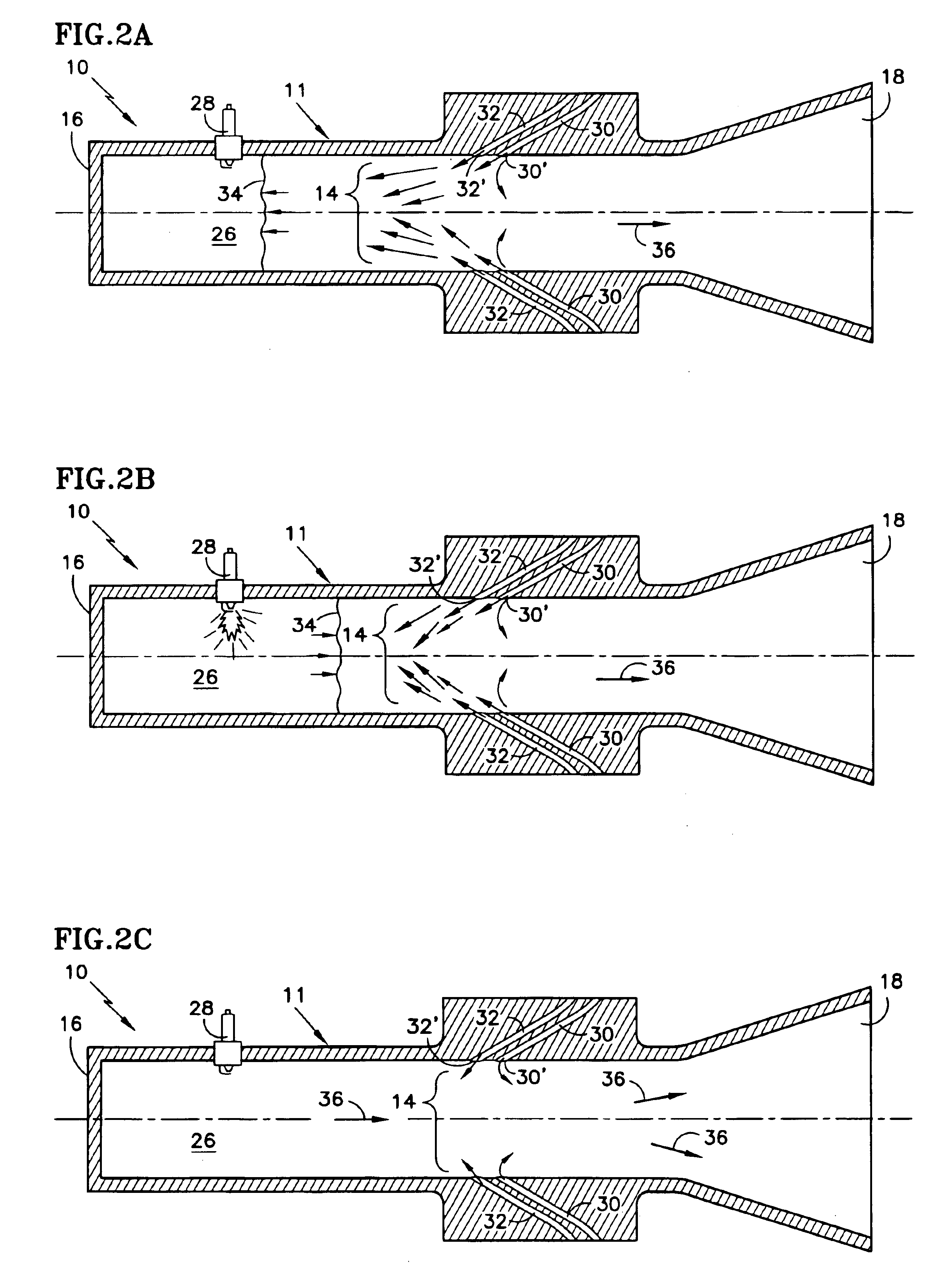Pulse detonation engine having an aerodynamic valve
a technology of aerodynamic valve and propellant, which is applied in the direction of intermittent jet plants, combustion types, lighting and heating apparatus, etc., can solve the problems of loss of efficiency, difficult and/or impractical implementation in this application and environment, and each has significant limitations, so as to optimize the specific impulse or thrust, accelerate the combustion of the injected propellant, and maximize performance
- Summary
- Abstract
- Description
- Claims
- Application Information
AI Technical Summary
Benefits of technology
Problems solved by technology
Method used
Image
Examples
Embodiment Construction
[0029]Referring to FIGS. 1 and 2A-2C, there is illustrated in FIG. 1 a simplified, somewhat diagrammatic, cross-sectional view of a pulse detonation engine (PDE) 10 employing fluid injection mechanism 12 to provide the aerodynamic valve (aerovalve) 14 depicted diagrammatically through the use of gas flow arrows in FIGS. 2A-2C in accordance with the invention. The PDE 10 is typically an elongate tubular structure 11 having a closed thrust wall end 16 and an opposite exit, or exhaust, end 18 that is open. A fluid injection mechanism 12 is located intermediate the opposite ends 16 and 18, relatively toward the exhaust end 18, and may typically include an annular injector member 20 and associated fluid pulse injection valves 22 and 24. The annular injector member 20 may conveniently be included as a structural portion of the tubular PDE structure. The region of the PDE between the injector member 20 and the thrust wall end 16 comprises the detonation, or combustion, chamber 26. An activ...
PUM
 Login to View More
Login to View More Abstract
Description
Claims
Application Information
 Login to View More
Login to View More - R&D
- Intellectual Property
- Life Sciences
- Materials
- Tech Scout
- Unparalleled Data Quality
- Higher Quality Content
- 60% Fewer Hallucinations
Browse by: Latest US Patents, China's latest patents, Technical Efficacy Thesaurus, Application Domain, Technology Topic, Popular Technical Reports.
© 2025 PatSnap. All rights reserved.Legal|Privacy policy|Modern Slavery Act Transparency Statement|Sitemap|About US| Contact US: help@patsnap.com



